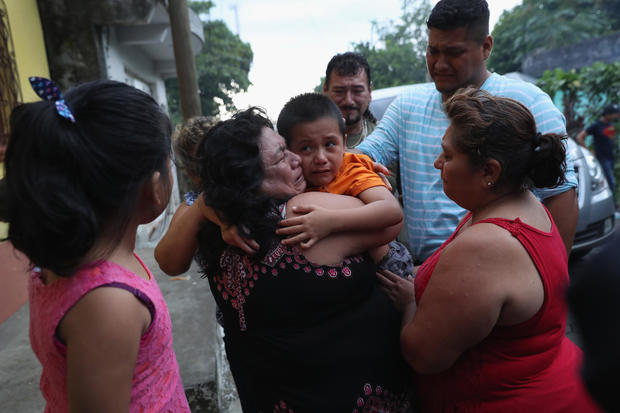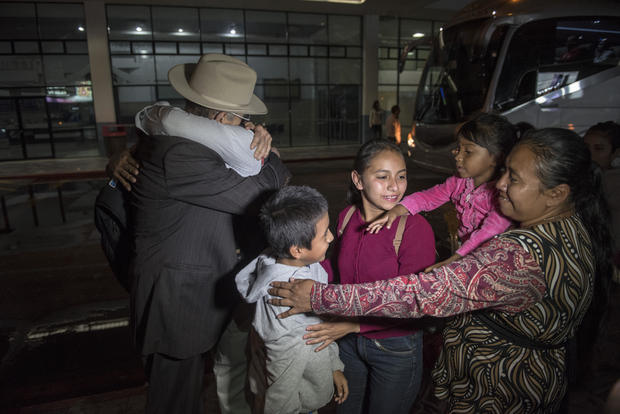A federal judge has ordered the Trump administration to allow a small group of migrant parents it separated from their children and then deported to return to the U.S. The judge found that some of the migrants were probably coerced into authorizing their deportation and were given inaccurate or misleading information by immigration authorities.
In a ruling Wednesday, Judge Dan Sabraw of the U.S. District Court in San Diego declared the deportations of 11 migrant parents unlawful and instructed the government to grant them entry into the country and the opportunity to reunify with their children and pursue asylum claims. The parents were separated from their children under the administration’s controversial “zero tolerance” policy.
The decision is the latest defeat for the administration in litigation surrounding its now discontinued practice of forcibly separating migrant children from their parents near the U.S.-Mexico border. President Trump was forced to rescind the policy through executive order last summer days before Sabraw issued a ruling blocking the government from carrying it out. The policy led to the separation of nearly 3,000 migrant children from their parents or legal guardians.
Since his ruling in June 2018, Sabraw has overseen litigation surrounding the controversial practice and has issued several orders on the matter, including ones instructing the government to reunite all separated families and identify all separated children in U.S. custody. As a result of his orders, the government identified all separated children and reunified about 2,300 of them with at least one parent.
Nearly 500 parents, however, were deported without their children. The plaintiffs in the case, a group of immigrant advocacy and legal groups, made what Sabraw called “Herculean efforts” to find all those parents. “Many of the parents were located in remote villages in the recesses of Central America, and nearly all of them have now made the difficult decision either to reunify with their children in their home countries or to waive reunification and allow their children to remain in the United States to pursue their own claims for asylum,” Sabraw wrote Wednesday.
Out of the ones who opted to seek reunification with their children, 30 returned to the U.S. without permission, were placed in immigration court proceedings and allowed to reunite with their children.
For his latest ruling on Wednesday, Sabraw reviewed the cases of 18 parents who requested entry into the U.S. to reunify with their children. Judge Sabraw approved the requests of 11 of the parents but found that seven of them failed to meet their burden of proving they were wrongfully removed.
For most of the deportations he declared unlawful, Sabraw said the decisions by migrants to waive their rights and sign off on their removal from the U.S. were not voluntary. In one case, one father said officials warned him that they would separate him from his eight-year-old boy unless he backed down from claiming asylum and agreed to his deportation.
“Fearing the permanent loss of [my son] in a foreign land to an unknown American family was too much for me to bear. As a result, I was forced to sign the paper in front of me that I could not read, and agreed to be deported in order not to lose my 8-year-old son to adoption,” the father said, according to testimony cited by the court.
Despite what the officer claimed, the father said he was still separated from his son. “After I signed the document, [my son] was separated from me, and the officers placed my hands and feet in shackles,” his testimony reads.
A mother who was separated from her son after being apprehended in late 2017 abandoned her asylum claim “as a result of the continued separation from her child,” Sabraw wrote. The migrant mother cried constantly after the separation and often did not know the whereabouts of her son, according to testimony provided to Sabraw.
“She was thereafter allowed only limited phone contact with her son, and during the time they were separated, she suffered not only emotional harm, but physical harm as well,” Sabraw concluded.
After six moths of being separated, the mother, out of desperation and under the belief that she would be reunited with her son, chose to abandon her asylum claim. But she was removed from the country and wasn’t reunited with her son.
The judge said another father was subject to “coercion and misrepresentations” by an immigration officer. According to the father, the officer told him he could not stay in the U.S., even if he feared returning to his home country, because “the president had changed the law.” The father was also told that only his son could stay in the U.S.
One father who was separated from his daughter was also deported unlawfully, Sabraw said, because one immigration officer mischaracterized the asylum system in the U.S., allegedly telling the migrant parent that “there was a new policy of zero tolerance towards migrants and that they were no longer giving out asylum.”
The federal judge also ruled that some of the deportations were unlawful because migrant parents were not provided credible fear interviews, which are supposed to be conducted by asylum officers if migrants express fear of persecution in their home countries.



